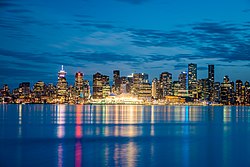Course:GEOG350/Sections
| Guidelines | Create Your Book Chapter | Book Sections and Themes | Help and Resources |
| GEOG350 Urban Worlds Open Textbook Project | |
|---|---|

| |
| Course Info | |
| Instructor: | Dr. Siobhán Wittig McPhee |
| Book Index | |
| Help and Resources | |
The following is a draft overview of the sections of the book:
Section 1: Cities as living spaces – social, cultural and embodied
This section explores how social and cultural embodied factors influence the experience of city life. How these factors contribute to the diversity of urban experiences and shape the identity of city dwellers. Discussrd how these connections influence behaviours, emotions, and social interactions.
Section 2: Place, Placelessness and Spatial Inequality
This section analyzes the implications of attachment or detachment to urban spaces. Discusses concepts such as belonging, alienation, and identity in the context of urban geography. Examine the effects of spatial inequality in cities. Discusses how disparities in access to resources, services, and opportunities can impact mental health and wellbeing.
Section 3: Public, Private and Unsafe Space
This sections investigates the boundaries between public and private spaces in urban settings. Discuss how these boundaries impact individual privacy, community engagement, and social dynamics. Explore the responses to perceived unsafe urban spaces.
Section 4: The psychological nature of cities human at the forefront of creation
Building on Lefebvre’s approach as a city as a living organism, this section explores the idea that the city is a social construct shaped by human creativity and imbued with symbolism. Drawing on Lefebvre's work, we'll examine how concepts like psychogeography highlight the psychological impact of urban environments. We'll critically consider Lefebvre's key ideas like the science of the city, the right to the city, class segregation, and the city as an 'oeuvre'. These concepts are essential for understanding the challenges of urban planning and envisioning a more just and coherent city. Key questions include: How do we design cities for psychological well-being, and whose vision ultimately shapes the urban 'oeuvre' (the city as a collective project)?
Section 5: Data
Data has become an integral part of understanding and managing the complexities of modern cities. Urban planners and policymakers increasingly rely on various forms of data – from demographics and traffic patterns to environmental impact and social indicators – to make informed decisions. Visualizing this data through maps, charts, simulations, and other graphic representations allows for clearer pattern recognition, trend identification, and deeper analysis of spatial relationships. Data visualizations make complex urban issues more understandable and actionable, leading to policies focused on efficiency, sustainability, and equitable access to resources.
Section 6: Segregation, uneven resource distribution, and environmental injustice
A foundational exploration of the concepts themselves: segregation, uneven resource distribution, environmental injustice, and their historical roots. Building on the data visualization from last chapter how can we study how spatial inequality shapes people's lives. What are some avenues for exploring potential solutions, including policy interventions, community-led initiatives, and the role of urban planning in fostering a more equitable city.
Section 7: The evolving concept of the smart city
How can cities leverage technology to enhance efficiency, sustainability, and livability. Smart city applications such as intelligent transportation systems, energy optimization, and public safety initiatives are framed as innovation, but what are the social and political implications of smart cities? What are the concerns surrounding privacy, surveillance, and the potential for digital divides.
Section 8: Ecological urbanism
Ecological urbanism offers a framework for designing and managing cities that prioritize harmony with natural systems. The second part of week 5 asseses the core principles of ecological urbanism, emphasizing the integration of green infrastructure, resource efficiency, and the promotion of biodiversity. Cities around the world are implementing ‘nature-based’ solutions for challenges like stormwater management, urban heat island mitigation, and enhanced quality of life. Does ecological urbanism mean more resilient, sustainable, and livable cities in the face of climate change and rapid urbanization?
Section 9: The city through the lens of political economy
This section analyzes how economic forces, power relationships, and government policies shape urban landscapes. We'll trace the evolution of political-economic thought as it relates to cities, from classical theories to contemporary debates on globalization, neoliberalism, and the role of the state. By studying how economic systems and labor markets function within cities, we'll gain insights into issues ranging from gentrification and housing affordability to patterns of wealth inequality and the changing nature of work in the urban context.